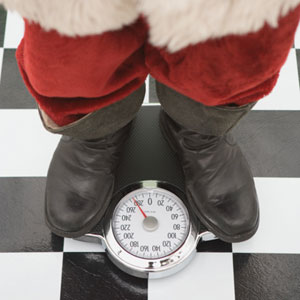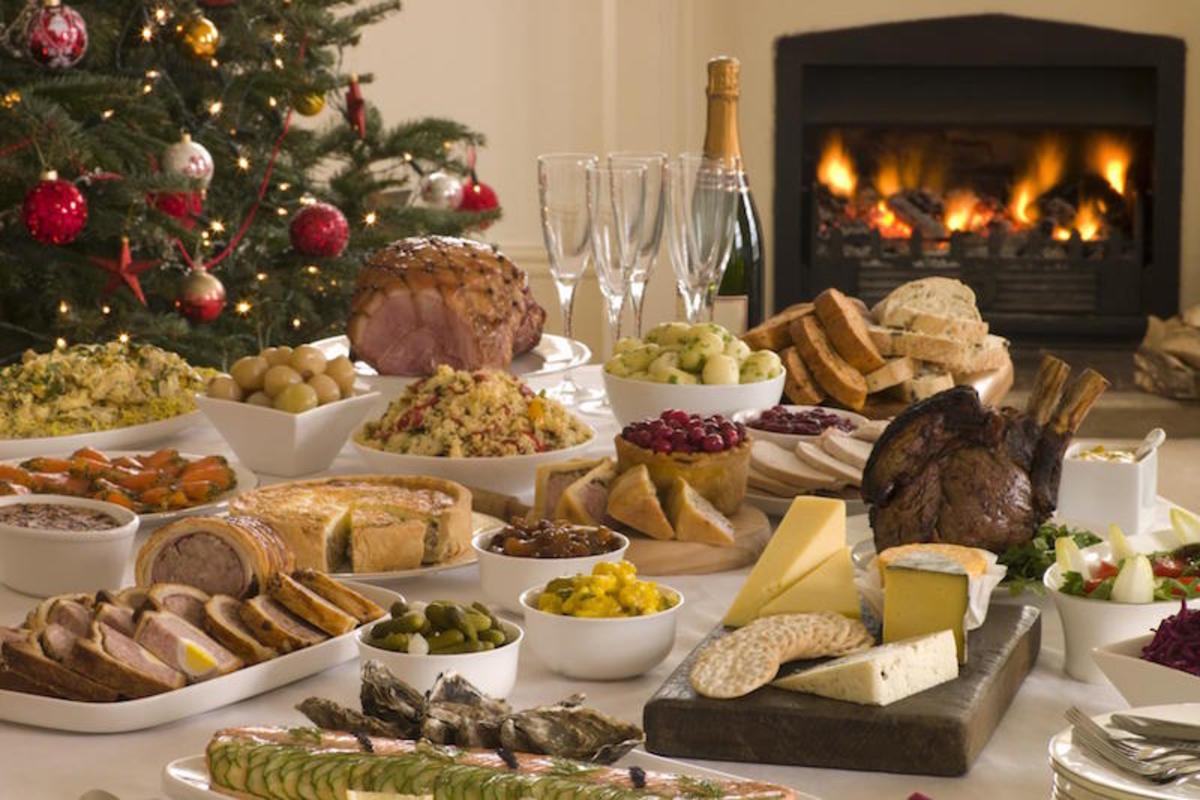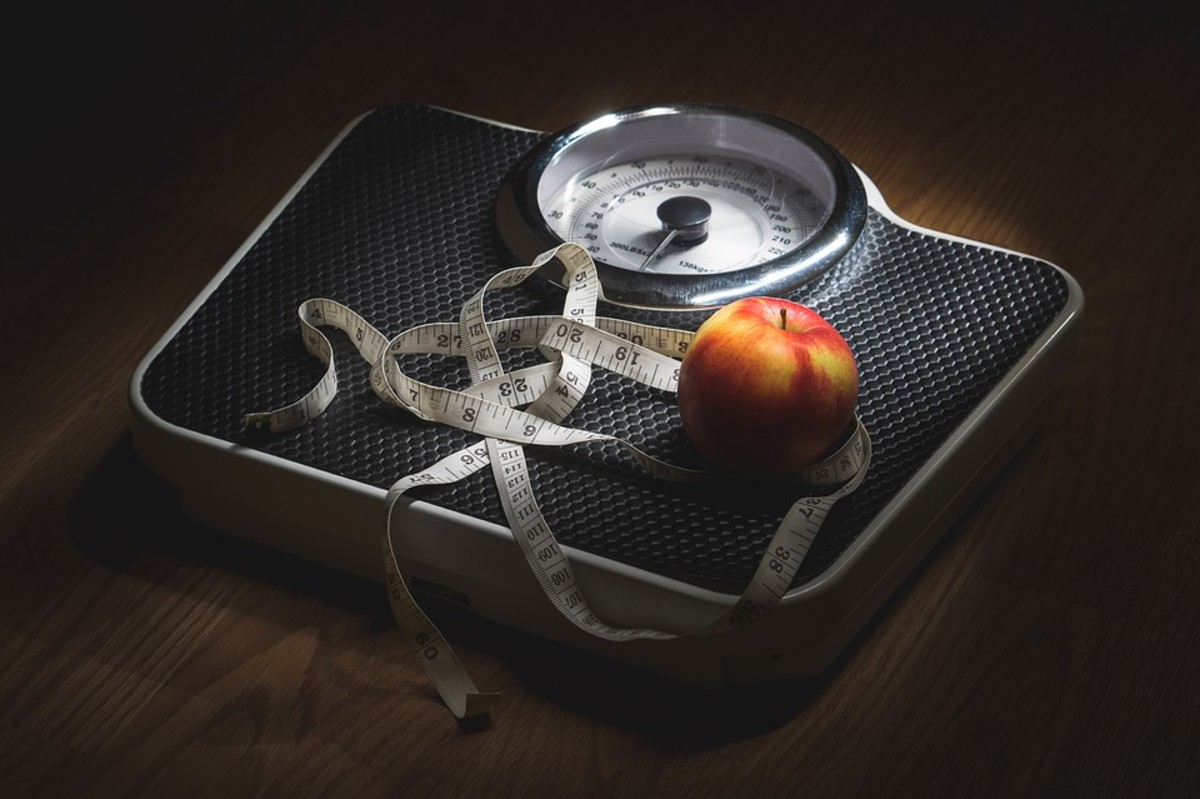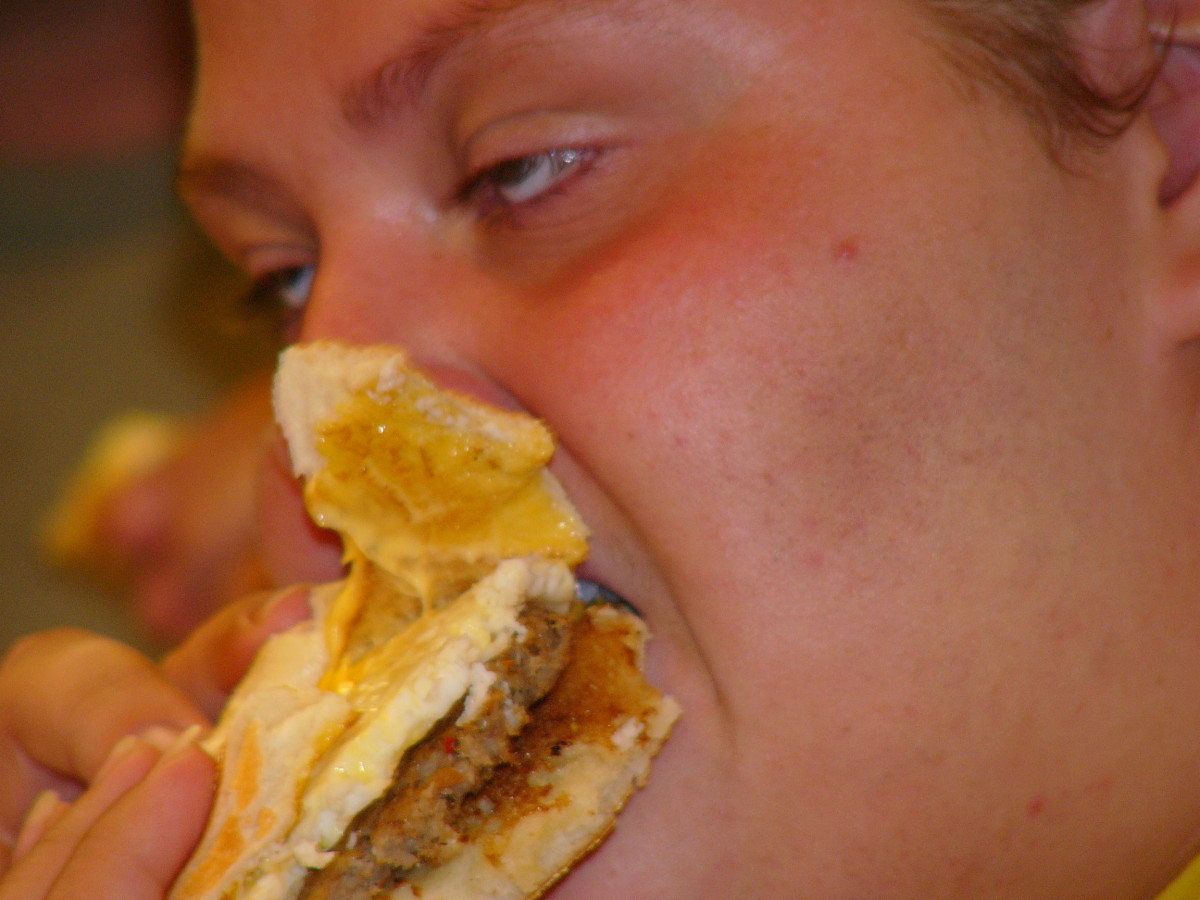Coping with Holiday Eating and Weight Gain

Facts About Holiday Eating and Weight Gain
Most people do gain weight between the Thanksgiving and New Year holidays. Most people believe that we gain five to ten pounds over the holidays. Research shows that on average we actually gain one pound over the six week holiday period. Most people exaggerate their holiday weight gain by about three pounds. Fewer than ten percent of people gain five pounds or more. People who are already overweight or obese are more likely to gain five pounds than people who are not.
While most weight gain occurs over the holidays, we gain an average of .4 to 1.8 pounds per year. If we gain a pound or two every year for twenty years, we are twenty to forty pounds heavier at age fifty than we were at age thirty. Because of gradual weight gain over the years, we are more likely to gain more weight over the holidays when we are older; increasing our risk for heart disease, diabetes and other health problems related to obesity.
What Contributes to Holiday Weight Gain?
Besides the fact that there is more food available during the holidays, at home and in the office, there are often very painful memories, issues and emotions associated with the holidays. There are also increased external stresses during the holidays; increased demands on time and workload, increased financial stress, crowded stores, long lines, more traffic and more noise, more social interaction and more contact with family. We are more likely to eat fast food while out shopping or because we are too busy to prepare a meal. While we can learn savvy ways to eat healthily at fast food restaurants, the tendency is to eat large portions of unhealthy food. When we are busy, we are more likely to go for long periods of time without eating, and then eat more when we do eat.
Food is often used as a coping mechanism in much the same way that substance abuse is used as a coping mechanism. We often look to food to soothe and comfort us, and make us feel better. We might also use food as a way to escape, avoid or forget about problems or issues.
Using food as a coping mechanism is not a healthy way to cope or solve problems. Healthy coping would include exercise, talking to friends for support, journaling and reading. Healthy problem solving involves identifying problems and working toward solving them rather than avoiding them or denying them.
For ongoing emotional problems, excessive use of food for coping, and compulsive over eating, it can be very helpful to work with a therapist and dietician who are experienced working with eating problems. Overeaters Anonymous (OA) groups also provide support and a program of recovery from compulsive eating. The focus is not on weight, weight loss or diets, but on physical, emotional and spiritual well-being. Recovering from compulsive eating requires developing new eating habits and changing thought processes related to eating and dieting.
Effective Problem Solving
Review
|
|---|
Identify the problem as early as possible
|
Define the problem accurately
|
Consider as many solutions as possible
|
Think through the consequences of each solution
|
Choose the best solution or combination of solutions
|
Act on the solution
|
Review the process and evaluate the solution
|
Using food as a coping mechanism is not a healthy way to cope or solve problems.
Coping Strategies
Since weight problems develop from taking in more calories than are used, the key to maintaining weight during the holidays and other special occasions is controlling calorie intake. This can be challenging during the holidays, but not impossible. There are some long term health benefits to doing so. Below are some strategies for coping with the holidays and other special occasions that include some different ways to think about the role of food on these occasions.
Plan Ahead, Set Goals, and Monitor Eating and Activities
The single most important strategy for dealing with holiday eating is planning ahead. It is generally helpful to have a plan for each day. When extra food is around for several days, it is helpful to plan several days in advance. The days following Thanksgiving and Christmas, when there are leftover meals and desserts, are peak periods at home. The weeks before Christmas, when everyone brings desserts, cookies and candies to work, and the company Christmas luncheon is held, are especially challenging times on the job.
Planning ahead might involve focusing on weekly rather than daily calorie goals. It is still helpful to make a plan for each day, and to be clear and realistic about how you will achieve your goals for the day and week. By planning to eat less the day(s) before a peak period and the day(s) after, and allowing extra calories on peak days, it is possible to still achieve daily and weekly goals, and the long term goal of maintaining weight over the holidays; or continuing long term weight loss goals through the holidays.
Attempting to not eat at all before or after these peak periods or events is not a good idea. This deprivation usually results in overeating later.Increased feelings of deprivation lead to increased anxiety which leads to increased emotional and compulsive eating. It is better to maintain structured eating habits rather than to allow hunger to build. It can be helpful to recognize the difference between hunger and craving, and to eat until no longer hungry rather than until full or over full.
Completely avoiding the cookies, desserts and candies can also be a mistake. It is better to include some of these in the daily meal plan or calorie count if desired. Most people’s beliefs about dieting convince them that eating sweets is forbidden, and that doing so means they have broken their diet and failed at dieting. Filled with feelings of discouragement and failure, a binge will surely follow. Healthy eating habits involve being smart about how much is eaten and learning to eat only when hungry.
Sometimes people eat extra food out of fear that others will eat it all and there won’t be any left later. One way to deal with this is to take some now and wrap it up for later when hungry. Another way to cope with all the goodies at work is to bring healthier food from home to eat instead. Eat the healthier food when hungry and only eat when hungry.
Monitoring calories and weight is important. Continuing to monitor through the holidays is very important. It is a way to keep informed about progress, make adjustments in plans as needed, and stay focused on goals.
My Calorie Counter at Everyday Health has a number of helpful tools for planning meals, setting goals, tracking weight and measurements, counting calories, calculating BMI, IBW and calories burned in various activities. There are numerous other features to include online support, mobile apps, a food journal, related articles, and other tools.
A search for McDonald’s Big Mac shows that there are 540 calories in a Big Mac, 9g sugar, 3g fiber, 139% iron, 29g fat, etc. By clicking “add to my food journal,” an immediate calculation is displayed that shows how many calories remain in the calorie budget for the day. Whether or not two cookies are within the budget for the day can be easily determined. A glance at the weight tracker shows that even though daily calories were above the set target, weight is still down .2 lbs for the day and .6 lbs for the week. A goal for tomorrow might be to reduce calorie intake tomorrow by the amount over budget today. Another goal would be to leave tomorrow’s intake the same and accept that weight loss this week will be less than average, but still an overall loss; and no gain.
Alcohol
Remember to consider alcohol in your planning for social events during the holiday season. Alcohol adds calories, so remember to count them. Alcohol lessens inhibition and can weaken the resolve to eat moderately. Some people feel pressured to drink in social situations, but many people do not drink for many different reasons. Some abstain because they are driving, some because they prefer to, some because they have problems with alcohol, and some because of the calories.
Think of Non Food Pleasures and Deal with Pressure to Eat
Social occasions during the holidays seem to center around high calorie food and drinks in large quantities. Many people believe that because there are large quantities available, that large quantities must be eaten. Some people worry they will offend the host or hostess if they decline food. Some people believe it is not possible to enjoy a social occasion without overeating. It is possible to eat small amounts and to enjoy the occasion without overeating. It can be helpful to think of other pleasures involved in the event, such as interacting with others, having time to relax, not having to wash dishes. This way, food becomes less important. It can be helpful to know that it is ok to decline food and to practice saying, “No” politely and firmly ahead of time if needed. It can be helpful to observe whether others are eating large portions of everything available, and how others react to those who are not. Some people are very self conscious and believe others are paying more attention to their eating than they really are. It is not necessary to eat just to please others, and people rarely notice what and how much others are eating.
Gifts of Food
During the holidays and on other special occasions, people give gifts of food; usually chocolates and sweets. If there is someone who typically gives gifts of food, it can be helpful to ask them to buy a non food gift instead. If asking the person directly is difficult, a spouse, friend or family member can tell others that you would prefer not to be given food gifts. If a food gift is received, plan ahead how to handle this. It could be re-gifted, donated or discarded.
Snacks and Treats
Ideas were already discussed above for coping with peak periods of food during the holidays and responding to pressure to eat. Rather than keeping large quantities of food on display all day, it is sometimes possible to handle snacks and treats differently. There can be limits set on the amount of extra food bought or brought in. Snacks can be kept in sealed containers and only set out in small quantities. Alternative, lower calorie snacks can be brought in, such as vegetable trays and dips, fruit, popcorn, bagels and breadsticks.
After the Holidays and Beyond
Once the holidays are over, it is better not to go on a crash diet to lose the pounds gained over the holidays. Crash diets are not healthy nutritionally, and 95% of people who use crash diets re-gain the weight lost and gain some additional weight. It is far better to return to healthy eating habits or to learn healthy eating habits that will help maintain any weight loss achieved.
Maintaining weight loss is as important as losing weight. There is currently no treatment for being overweight (except gastrointestinal surgery) that results in a weight loss of more than 10-15% of initial body weight; and the weight lost is usually re-gained. Typically a third of the lost weight is re-gained within 1 year and almost all of it is re-gained within 5 years. It is important to maintain the weight loss for several months in order to “lock in” the loss without re-gaining or attempting to lose more. If more weight loss is desired after a maintenance period, it is important to limit further weight loss to a 3 month period and return to weight maintenance for several months.
Most people want to lose more than 10-15% of their current weight, and consider their attempts to lose more as a failure. In reality losing that much weight and keeping it off is a huge accomplishment, and there are a number of benefits to a 10-15% weight loss; to include reducing many of the negative health effects associated with obesity. Viewing their attempts as a failure can lead a person to believe that they have no control over their weight at all. This can result in giving up efforts to maintain weight loss, and subsequently can result in weight re-gain.
- Shape Up America!
Founded in 1994, Shape Up America! is a 501(c)3 not-for-profit organization committed to raising awareness of obesity as a health issue and to providing responsible information on healthy weight management. Take a journey through our website to find - Obesity.org
The Obesity Society is the leading scientific society dedicated to the study of obesity. Since 1982, The Obesity Society has been committed to encouraging research on the causes and treatment of obesity, and to keeping the medical community and publi
References
Cooper, Z., Fairburn, C, & Hawker, D. (2003). Cognitive-behavioral treatment of obesity: a clinician's guide. New York, NY: The Guilford Press.
This content is accurate and true to the best of the author’s knowledge and is not meant to substitute for formal and individualized advice from a qualified professional.
© 2011 Kim Harris







